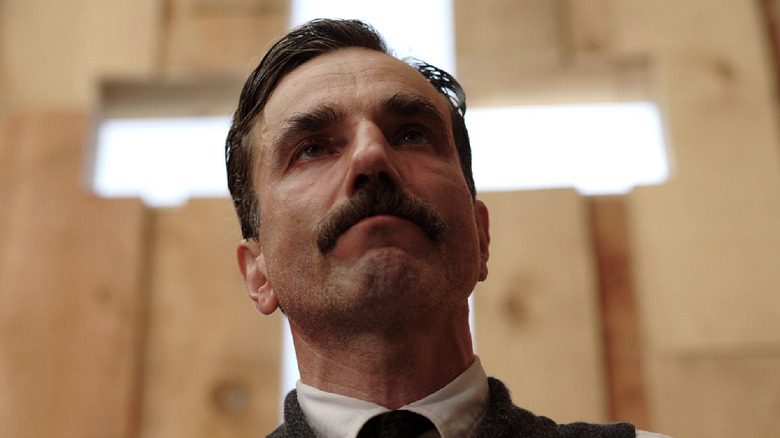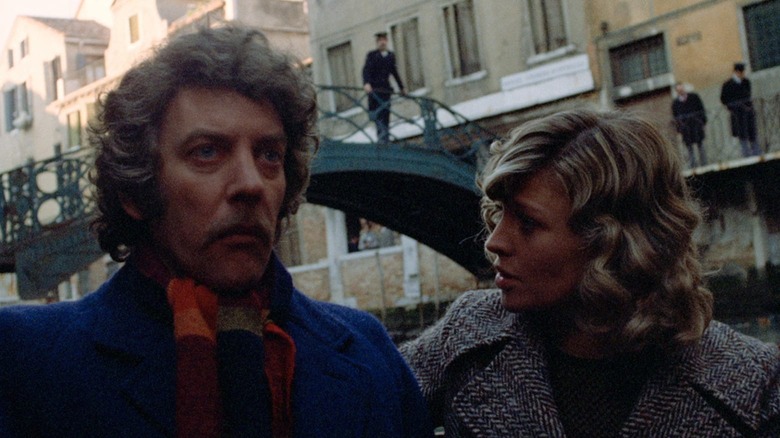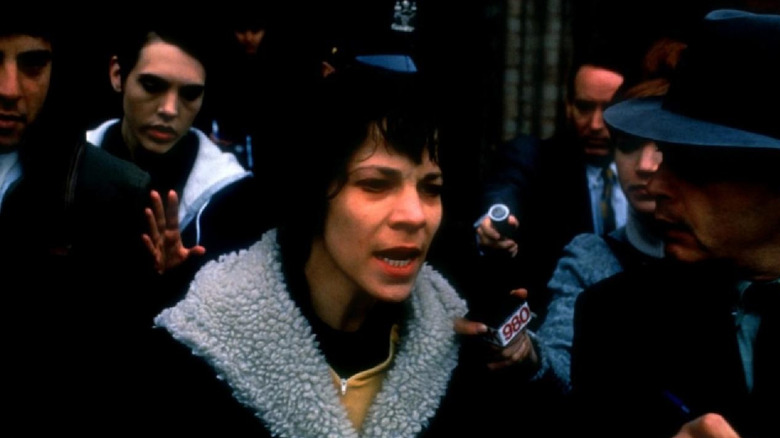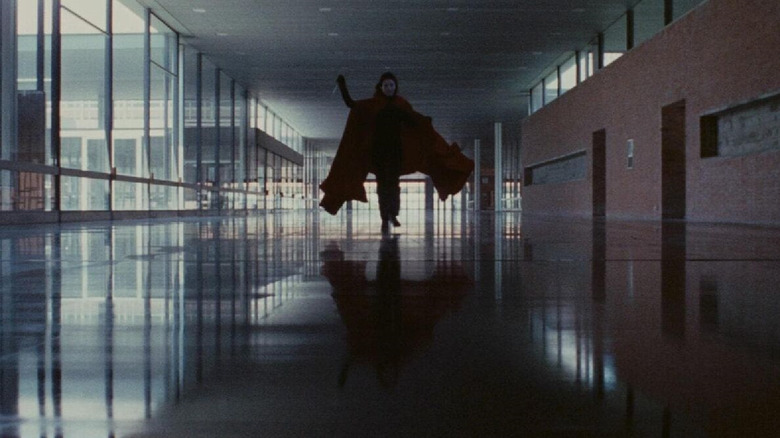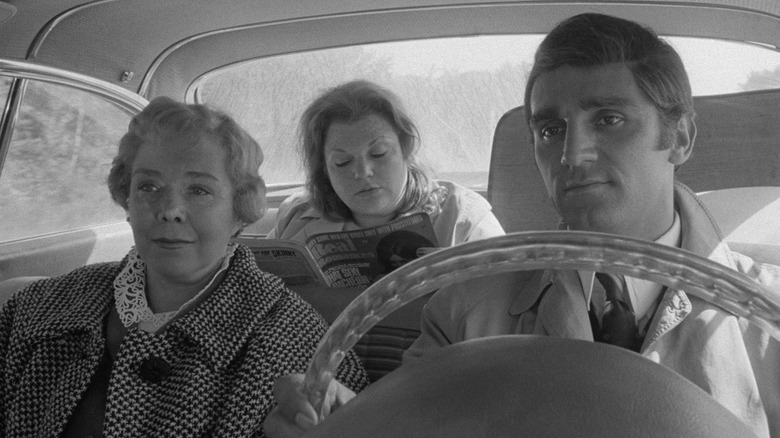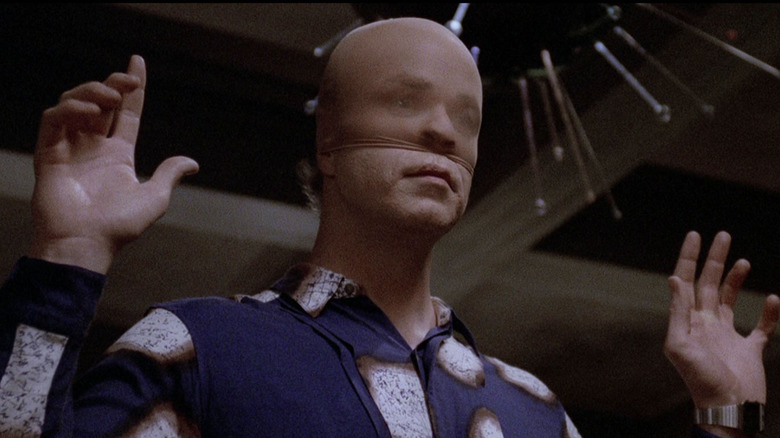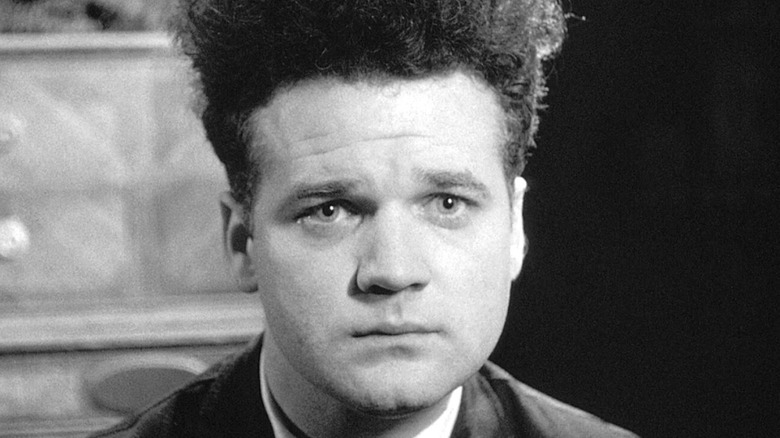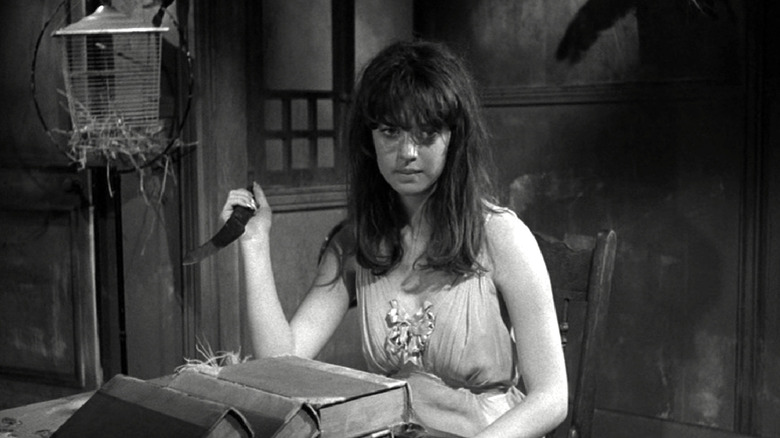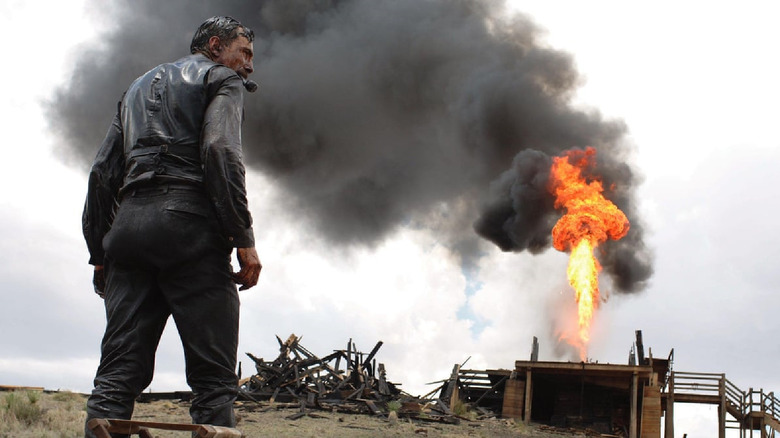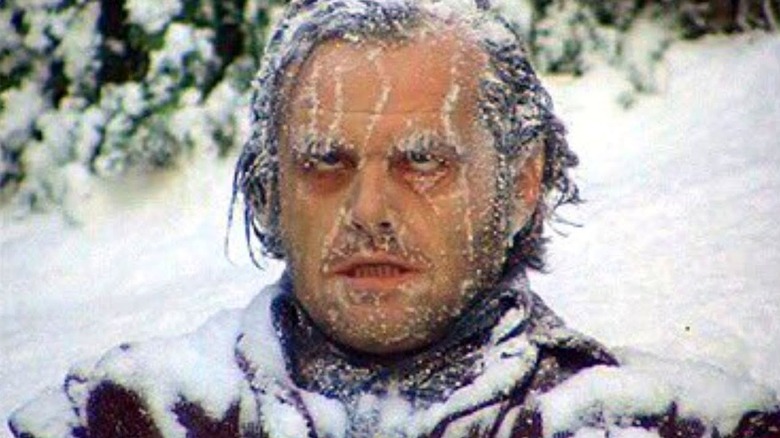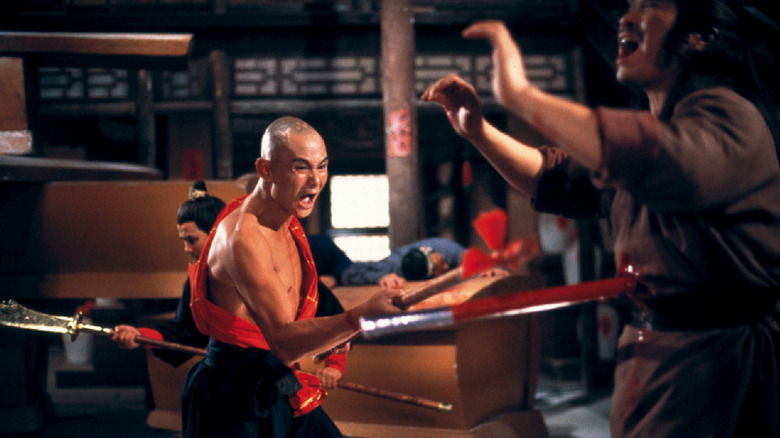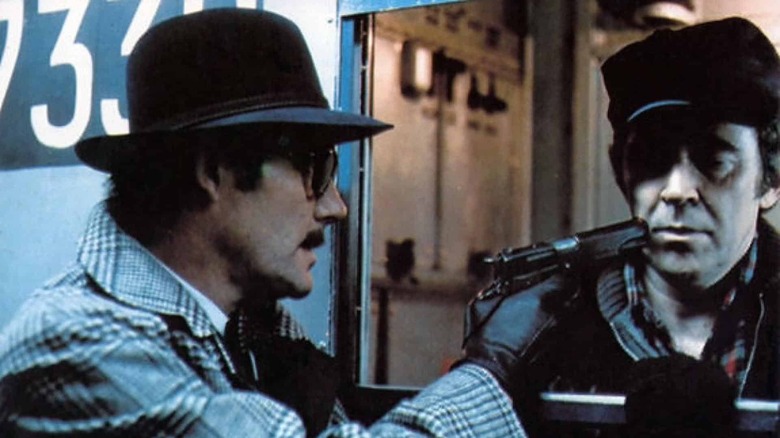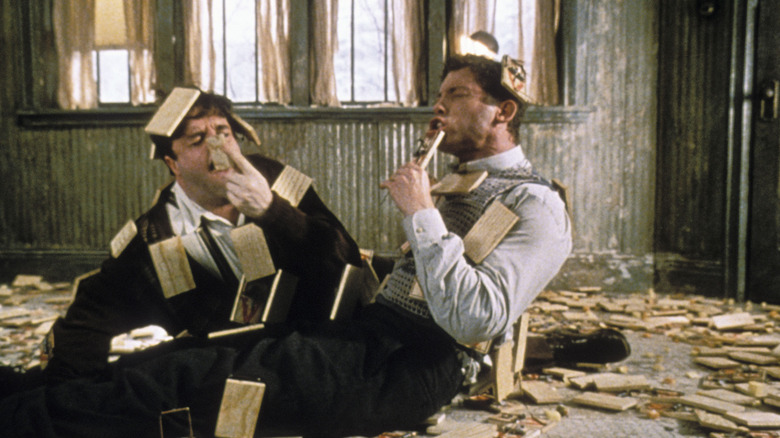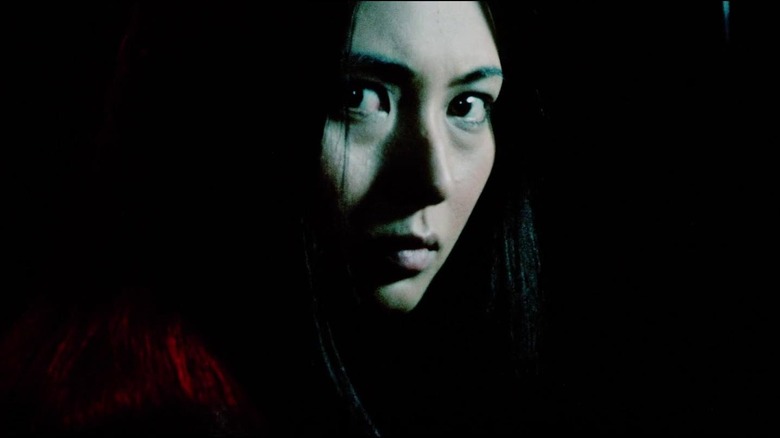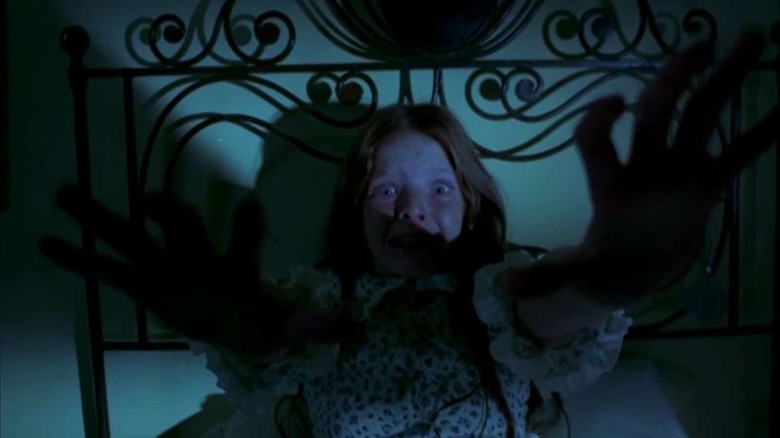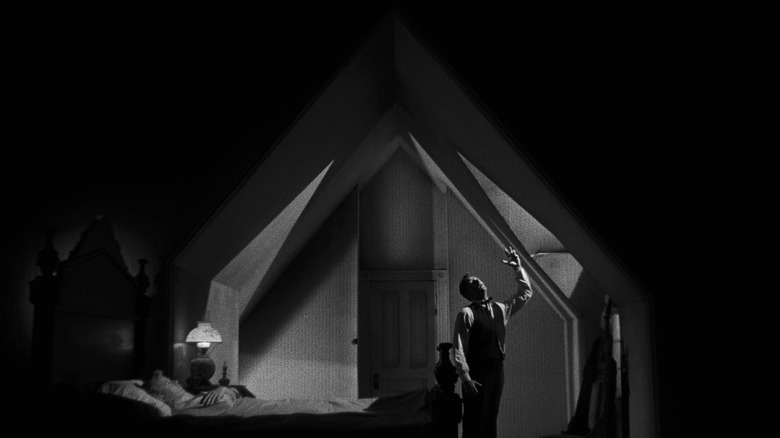Anya Stanley's Favorite Movies Of All Time
Hello /Film readers. I'm Anya Stanley, and I like movies — the darker, the better. In the past five years, I've fooled an outlet or two into paying me to talk movies, and /Film is the latest mark to take my film opinions seriously. When the invite came down to round up my top 15 movies, I was a little daunted. I've actively avoided this for said five years, because I knew my list would refuse to pick a lane, and would defy any attempts to corral and rank them in any way that makes sense. How do you weigh "Mouse Hunt," which has a rodent taking a dump on Christopher Walken's forehead, against Paul Thomas Anderson's ruthless take on an Upton Sinclair epic? I'll tell you how.
You write up each favorite as it comes to you, take a deep breath, and number each entry in the exact sequential order you wrote it. F*** it, we'll do it live.
Before the hate mail comes rolling in because my top 15 doesn't match the AFI Top 100's, let it be known that these are my personal favorite movies ever made, the ones I've watched so many times I can discern them from another room, from hearing just two seconds of the score. I'm not saying "The Honeymoon Killers" is better than "Annie Hall" — actually, yeah, I'll commit to that one. The list is not definitive but for the uninitiated, there exist some fine additions to your watchlist.
15. Don't Look Now
This movie, originally, was spoiled for me. That's right, the shocking ending (that I won't give away here) of Nicolas Roeg's non-giallo giallo (it's not Italian, and it breaks a few "rules" of the genre but captures the vibe, regardless) was divulged to me in "Bravo's Scariest Movie Moments" miniseries back in 2004; "Don't Look Now" was number 22, just behind the head-shaking PTSD nightmares of "Jacob's Ladder." Even knowing the fate of grieving father John Baxter as he processes his daughter's death, I couldn't pull myself away from its surreal, beautifully composed imagery and the quiet menace that sits in the edges of each scene. Donald Sutherland and Julie Christie each get an assist for their disciplined performances, tethering the night terrors with emotional weight and making that infamous ending that much more powerful when it hits.
14. I Shot Andy Warhol
When I'm asked who my favorite actor is, I wouldn't get nearly as many confused faces when I say Lili Taylor if people would just watch "I Shot Andy Warhol." It makes sense on some level — Mary Harron's depiction of both radical feminist Valerie Solanas and pop artist Andy Warhol is anything but marketable. Warhol, in this film, isn't especially venomous, and Solanas — visionary as she is — isn't prodigious enough for the art world she rubbed up against. Harron penetrates the sensationalist aspects of the story (that make up the title) to make a feature-length study of its main players, and Lili Taylor as well as Jared Harris as Warhol are more than up to the task. I keep coming back to this movie for Taylor and for Harron's magnificent showcase of a time and culture that had its warts as well as its beauty marks.
13. The Red Queen Kills Seven Times
Are the bodies stacking the result of a family curse or a blade-wielding maniac? Barbara Bouchet knows, and she knows it won't stop until seven lives are claimed. "The Red Queen Kills Seven Times" enjoys several carved-out places in my heart: in addition to being a favorite movie of all time for me, Emilio Miraglia's 1972 murder mystery is also my favorite Italian giallo of all time and features my most-beloved giallo score, by the great Bruno Nicolai. The movie's fashion-forward costumes (and, of course, the Red Queen's magnificent cape) would be at the top of a corresponding list were it not for Mario Bava's "Blood and Black Lace," but if there's one thing you'll get in a Miraglia picture, it's a hip aesthetic (for further viewing, see the director's prior effort "The Night Evelyn Came Out of the Grave." Shot like the film print was going directly to The Louvre with Alberto Spagnoli's stunning photography, I think I watch this one so much because it seems comfortable with its hysteria, measuring it out in bonkers sequences, and making for a controlled descent into a woman's madness.
12. The Honeymoon Killers
"The Honeymoon Killers" was Leonard Kastle's only foray into feature film directing, so the tale takes on even more of a lightning-in-a-bottle insistence than it did previously. Based loosely on the story of the Lonely-Hearts Killers Raymond Fernandez and Martha Beck, the movie's power lies in its stripped-down presentation of its unempathetic subjects gliding through innocent lives like sharks through water. Production was so threadbare (made on less than $200K) that its stars, Shirley Stoler and Tony Lo Bianco (themselves fledgling stage actors), did their own hair and makeup. Shot in a documentary-like black and white, nothing is glorified in "The Honeymoon Killers" — not its killers, not the deaths, not even the victims whose vulnerability is just as exploitable to Kastle as to the con artists. It's mean and it's plain, and most of the time, that's all I need for a story that I can connect with.
Note: For those with iron stomachs, Fatih Akin's 2019 German horror drama "The Golden Glove" brings a similar stark sensibility to serial killer Fritz Honka.
11. Manhunter
I was once called a gatekeeper for saying that "The Silence of the Lambs" is not a horror movie, though it is another runner-up in this list of favorites, behind its fellow crime thriller, Michael Mann's arresting, high-style "Manhunter," both films partially concerning one Dr. Hannibal Lecktor. Lecktor, behind bars, assists FBI profiler William Graham (William Petersen) in identifying and locating the Tooth Fairy Killer, played by a gently menacing Tom Noonan (for a similar yet more peripheral turn from Noonan, see Ti West's "The House of the Devil"). Psst — don't tell the horror fans I said this, but Brian Cox is the more interesting Lecktor than Anthony Hopkins of "Lambs."
10. Eraserhead
I argued with no less than four friends about which David Lynch movie is my personal favorite, such is the enigmatic nature of Lynch's works — can't make heads or tails of them at times, but boy is it transfixing. Ultimately, I went with the movie in his filmography that has since become considered one of the early "midnight movies," and because any movie list of mine feels naked without something of his. Set in a world that defies explanation, with characters set adrift in their own misery, framed like a series of cough syrup-induced hallucinations, "Eraserhead" is the most formally presented nightmare I've ever watched.
9. Spider Baby
"Spider Baby," or "The Maddest Story Ever Told," is hard to hype to people. It's a family movie, really, but a Jack Hill family movie. And a Jack Hill family movie will have just as much dysfunction as any Texas Chain Saw Massacre clan. This is the story of the Merrye family, who suffer from a condition that mentally regresses them back to infancy once they reach age 12 or so. So the story is filled with adults who act childish, and the adults caught in their webs as the childishness progresses to savagery. I borrowed the DVD from my boyfriend years ago and if we ever break up then he'll just have to cut his losses with this one and make peace with the empty slot on his shelf where "Spider Baby" once sat.
8. There Will Be Blood
Most of the analyses and praises written of Anderson's "There Will Be Blood" make much of Daniel Day Lewis' powerhouse performance as the insatiable oilman Daniel Plainview, the immaculately shadowed cinematography of Robert Elswit (probably the same reason why I'm so transfixed by the stark visuals of Dan Gilroy's "Nightcrawler," an honorable mention behind this list), or Johnny Greenwood's ominous orchestral score that sits at unsettling odds with the period setting. But the reason "Blood" sits on my list is because of its final monologue, in which Lewis unleashes one of the finest trash-talking thrashings ever committed to film. First telling poor, pathetic Eli Sunday that his land is worthless, then revealing that Eli was usurped by his own brother, and then dancing a verbal jig about his nemesis before taking his God complex to the highest (lowest) level. You'll never devastate someone as soundly as Plainview does here:
Stop crying, you sniveling ass. Stop your nonsense. You're just the afterbirth, Eli...that slithered out on your mother's filth. They should have put you in a glass jar on the mantelpiece. Where were you when Paul was suckling at his mother's teat? Where were you? Who was nursing you, poor Eli? One of Bandy's sows? That land has been had. Nothing you can do about it. It's gone. It's had. You lose....
7. The Shining
"The Shining" is one of those movies that finds fans even in people who don't consider themselves horror fans. It's also one of the more accessible Stanley Kubrick films, tapping into a universal set of fears that you don't need a degree in film studies to connect with. The unsettling tale of a family's consumption by a snowbound lodge is based on the bestselling Stephen King novel of the same name, which I read at age 14 after seeing the movie and I still got spooked enough to sleep with a light on — so it's never too late to catch up on the horror lit classics. The Room 237 scene, in which young Danny Torrance ventures into a forbidden room in the haunted Overlook Hotel, gave me nightmares for weeks, but the movie transfixes me as much as it repulses. Anyway, I got over the nightmares — now I have an Overlook pattern rug and regularly play the movie in the background while I work.
That bear costume is still creepy, though.
6. The Eight Diagram Pole Fighter
Written and directed by Lau Kar-leung, "The Eight Diagram Pole Fighter" begins with a gorgeously staged opening battle sequence between general Yueng Yip, his seven sons, and an army of men under general Pun Mei. One by one, the general and his bloodline are wiped out in a treacherous, bloody ambush that takes all but two of Yeung's sons. The sixth son returns home a shell of himself, too traumatized and unstable to take the lead and avenge the family. The fifth son takes shelter in a remote monastery and eventually convinces the monk leadership to allow him to train as a monk, soon developing the eight diagram pole fighting technique. When the chance comes for revenge, will he break his nonviolent, noninterventionist Buddhist vows? The whole bloody affair stars Gordon Liu in yet another collaboration with Lau; the dynamic duo had previously made martial arts movie magic with "The 36th Chamber of Shaolin" and "Executioners of Shaolin," among others. Do you dig the scene in Tarantino's "Kill Bill" where Uma Thurman's yellow-clad Bride single-handedly fends off the Crazy 88s? Then this movie's got something special for you: a nine-minute finale at a set piece featuring seven stacked coffins, skin avulsion, ripped-out teeth and, in the spirit of Joe Bob Briggs' Drive-In Totals, "Piggyback Fu."
5. The Taking of Pelham 123
Adapted by Peter Stone from Morton Freedberg's '73 novel of the same name, "The Taking of Pelham 123" is one of my all-time favorite thrillers for two reasons: its grit, and its cast. A basic story of the armed hijacking of a train and the negotiations that follow, "Pelham 123" is a perfect picture of the '70s Big Apple under Mayors John Lindsay and Abe Beame. Four years after David Serpico would blow the whistle on NYPD corruption and knowing David Berkowitz's killing spree would begin just two years later, "Pelham 123" stands alongside the more celebrated films of the era — the Coppola pictures, the Scorsese pictures, the Altman pictures — but with an added layer of grime and authenticity that the prestige of New Hollywood simply couldn't give outside of the odd John G. Avildsen movie. Plus it features one of the greatest "gotcha" endings of all time.
4. Mouse Hunt
In my Letterboxd review, I call this "A masterpiece of grim slapstick from the minds of unstable men," and I meant it. Ostensibly a family movie but truly a turf battle to the death betwixt man and mouse, "Mouse Hunt" doesn't seem like an outlier in Gore Verbinski's career — this is the man who made both "A Cure for Wellness," "The Ring" remake, and the "Pirates of the Caribbean" movies, after all. But alongside a firing-on-all-cylinders Adam Rifkin, who would go on to write "Small Soldiers" a year later and raunchy comedy "Detroit Rock City" a year after that, Verbinski crafts a timeless comedy with a host of memorable characters and a cheeky streak of adult humor mixed in with the classic Hollywood slapstick.
3. Female Prisoner Scorpion: Jailhouse 41
At once a women-in-prison film and a rape-revenge picture, the only sequel on my top 15 favorites list hails from '70s Japan. "Female Prisoner Scorpion: Jailhouse 41" is the second film in the visually phenomenal Female Prisoner Scorpion series from the Toei company. Under the continued direction of Shunya Ito, the straightforward storytelling of "Female Prisoner #701: Scorpion" gives way to something more fantastic in its follow-up, as the steely-eyed Nami Matsushima (Meiko Kaji) finds herself in confinement once again after dispatching with the assailants responsible for the death of her family in the first film. Here, Nami has ascended to icon status among her fellow prisoners, and so Inspector Goda (Fumio Watanabe) orders her gang rape by the guards. Matsushima escapes custody along with several other women convicts, and now it's a girl gang movie. The vengeance they take upon the guards, upon sexually aggressive men, and Goda himself make up the rest of the runtime, which includes an armed standoff between the convicts and the lawmen. A favorite moment has a guard taking a shovel to the back of the head, spraying absurd amounts of bright red blood; Ito holds the scene in suspension for a good five seconds, similar to the tableaus presented in 2019 Swedish horror "Koko-Di, Koko-Da." A beautiful film with a top-shelf lead in Meiko Kaji.
2. The Night Child
I was gifted "The Night Child" (AKA "Together Forever," AKA "The Cursed Medallion") from the Amazon Prime algorithm gods, who saw me puttering around their giallo section for a few months and recommended this feverish gem. There's a lot going on (too much, I'm sure some contemporary critics argued) in this Italian horror picture, but within it is demonic possession, a dead mom, an absent dad, an obsession with a painting, a bewitching score by Stelvio Cipriani, and a hauntingly poetic ending. If you're wondering whether the movie is pretty, you should know that director Massimo Dallamano fiddled around with a camera lens or two as cinematographer (under the name Jack Dalmas) for two Sergio Leone works — whether in life or death, every player on Dallamano's stage is photographed intimately, finding art in the nooks and crannies around death and darkness. When I realized that I had watched "The Night Child" at least 10 times and that it wouldn't stick around the streaming service forever, I panic-bought a cheap DVD release of the film for the cost of a cup of coffee. I have never, before or since, seen such a bleached-out, truncated transfer of a movie, which is a shame because this movie should have had a few boutique restoration releases by now.
I hope you're listening, Arrow Video.
1. The Night of the Hunter
It's a hard world for little things. Directed by Charles Laughton (the actor's only feature director credit) and starring a barrel-chested Robert Mitchum at his most terrifying until "Cape Fear" would come along in 1962, "The Night of the Hunter" is one of the closest homegrown iterations we'll get of a Guillermo del Toro fable precisely because of one shared premise, seen through every frame: the world is a terrifying place for children, full of dangers that escape the radar of adults. Laughton adapts Davis Grubb's novel of the same name, based loosely upon the true story of family-murdering con man Harry Powers. In the film, Powers (Mitchum), both traveling minister and serial killer, marries the widow of a former cellmate of his to find a hidden cache of robbery money. Her two children know where it is, but they're rightfully suspicious. One of my most beloved shots ever has Harry Powell chasing the fleeing children up a cellar staircase, his arms outstretched like Frankenstein's monster. Both expressionistic and pastoral, the film kicks into high gear when Lillian Gish squares off with Mitchum in a third-act waltz of career-high performances.
